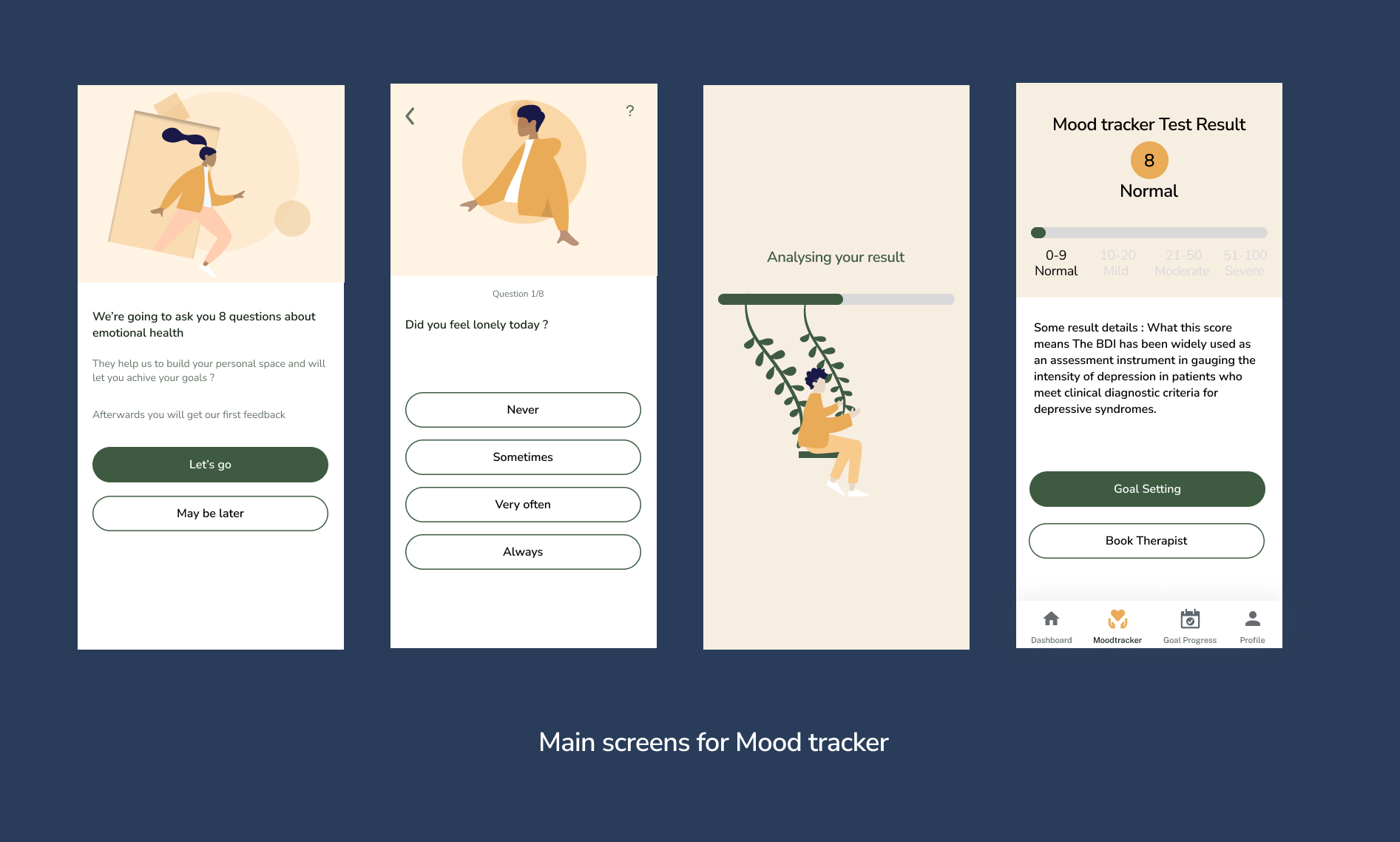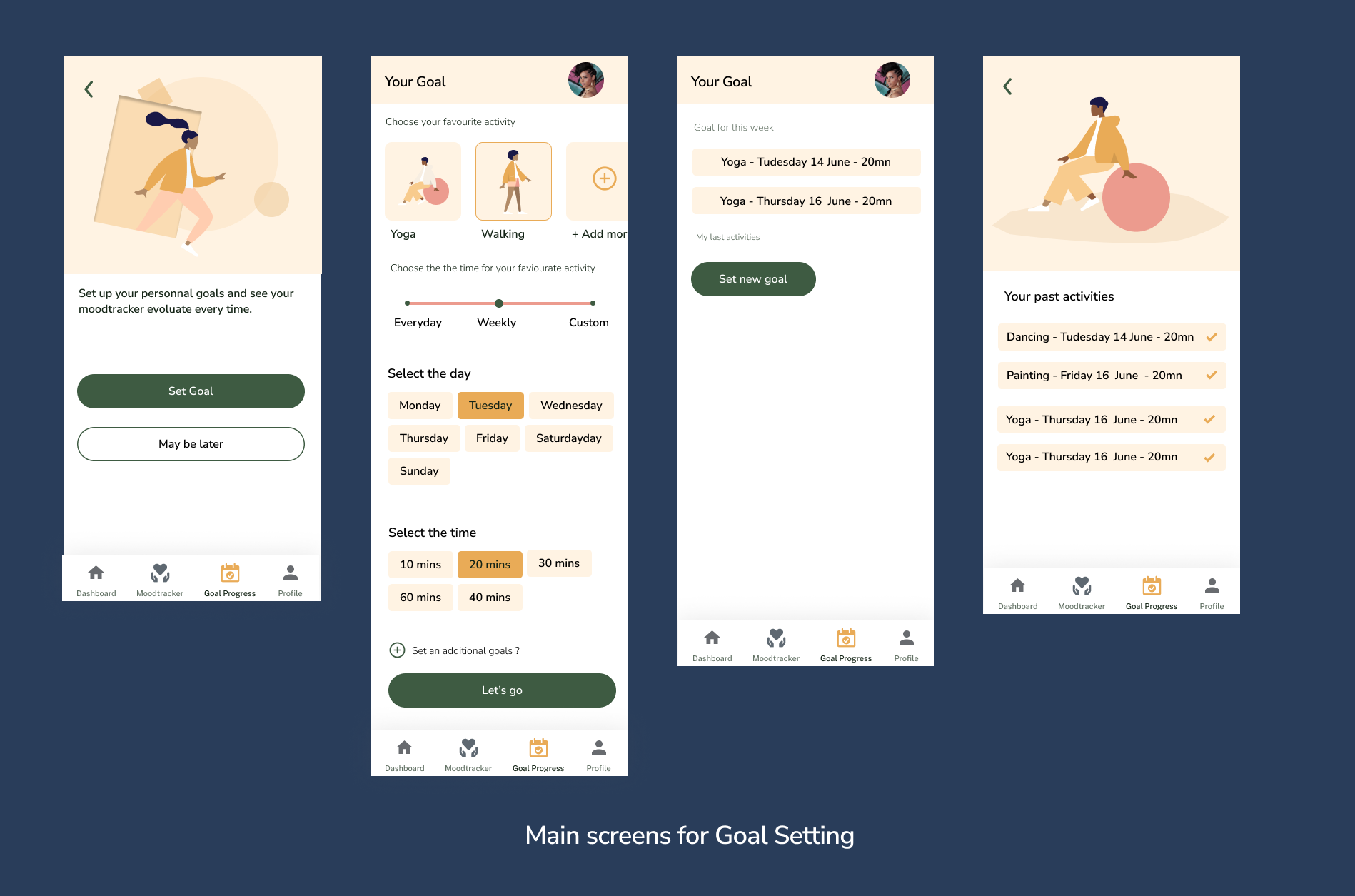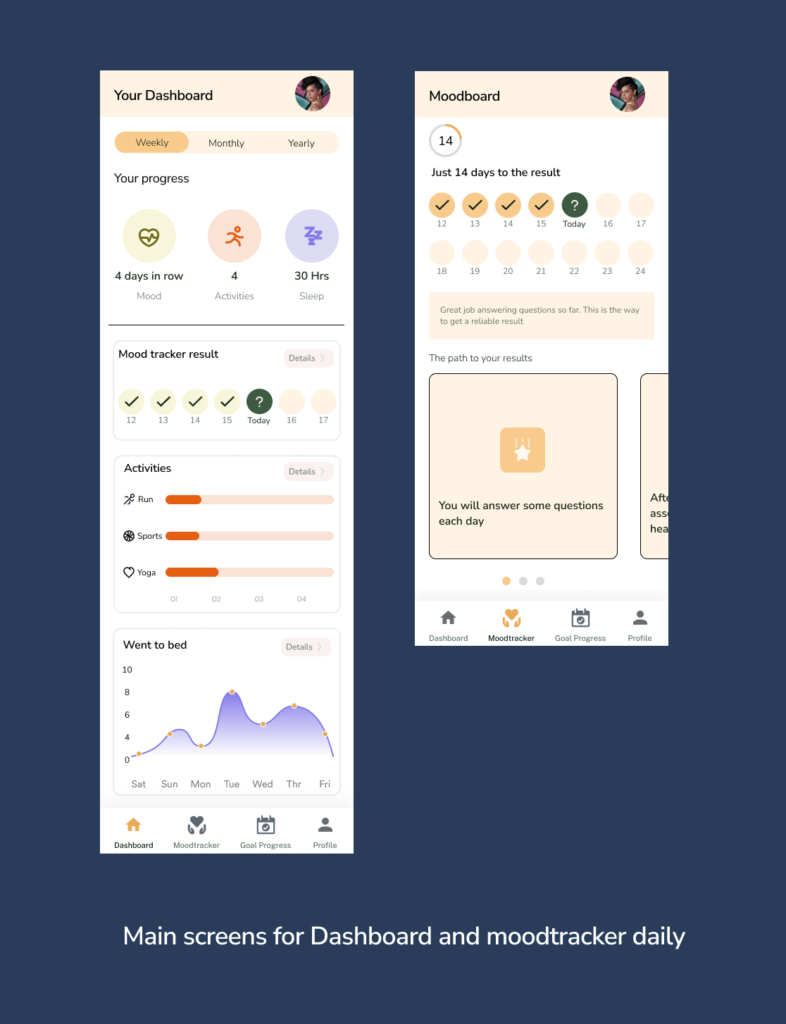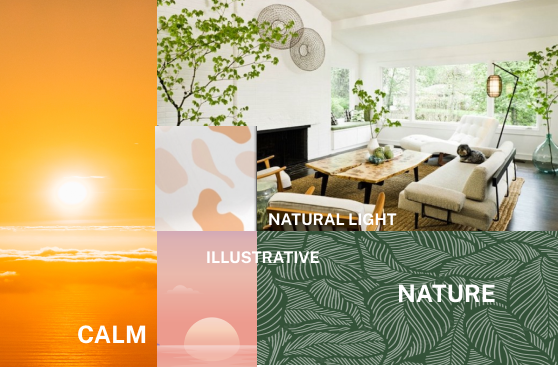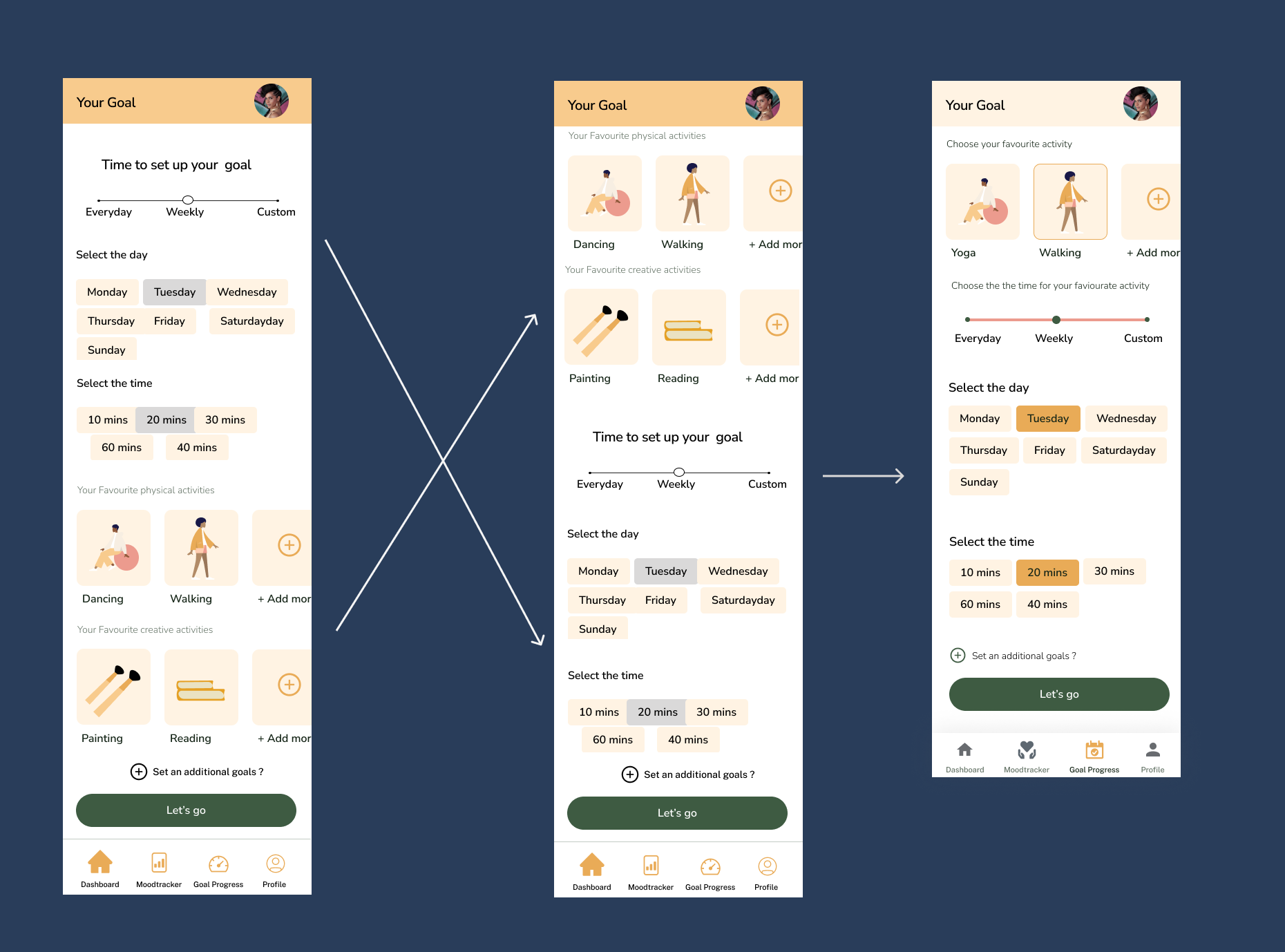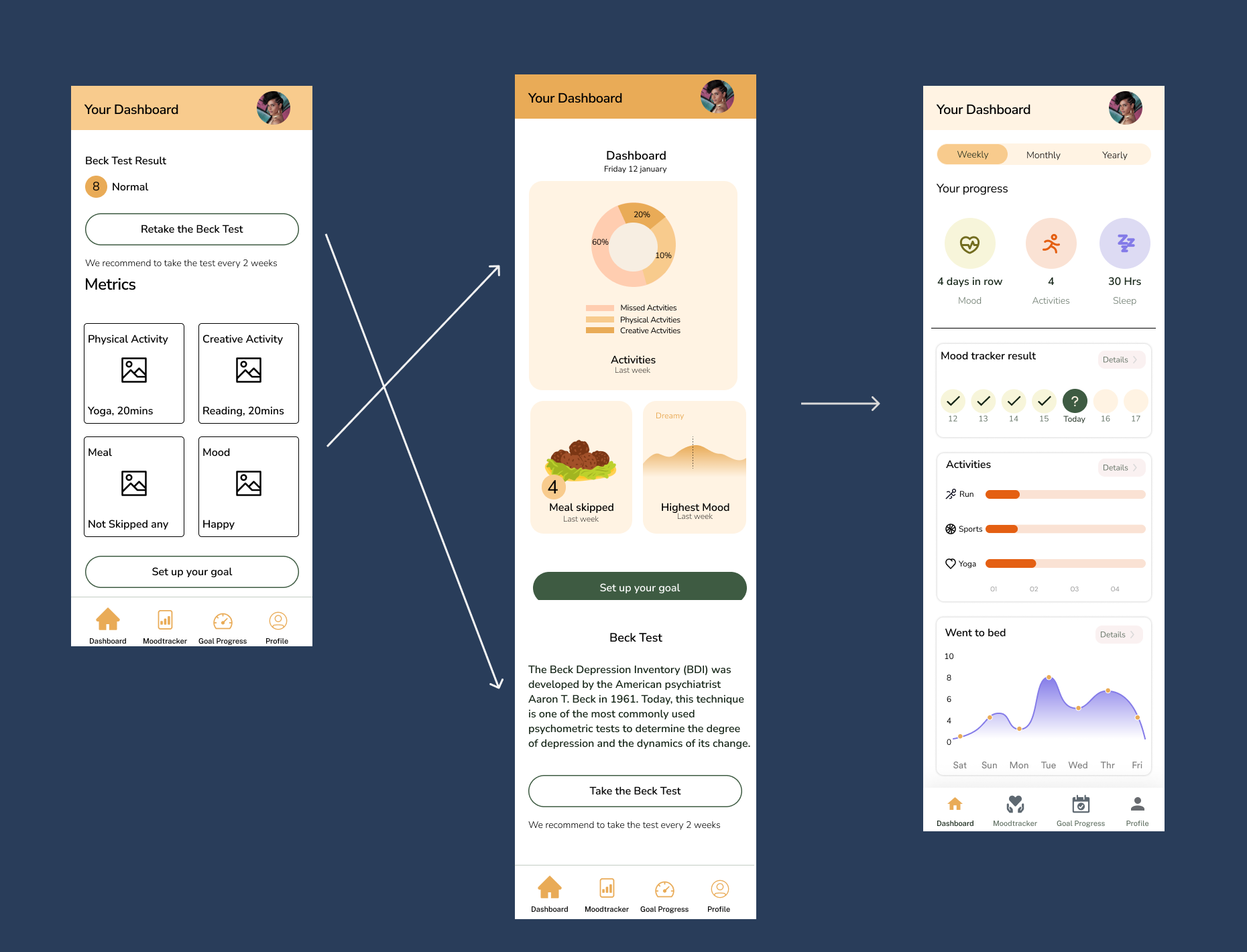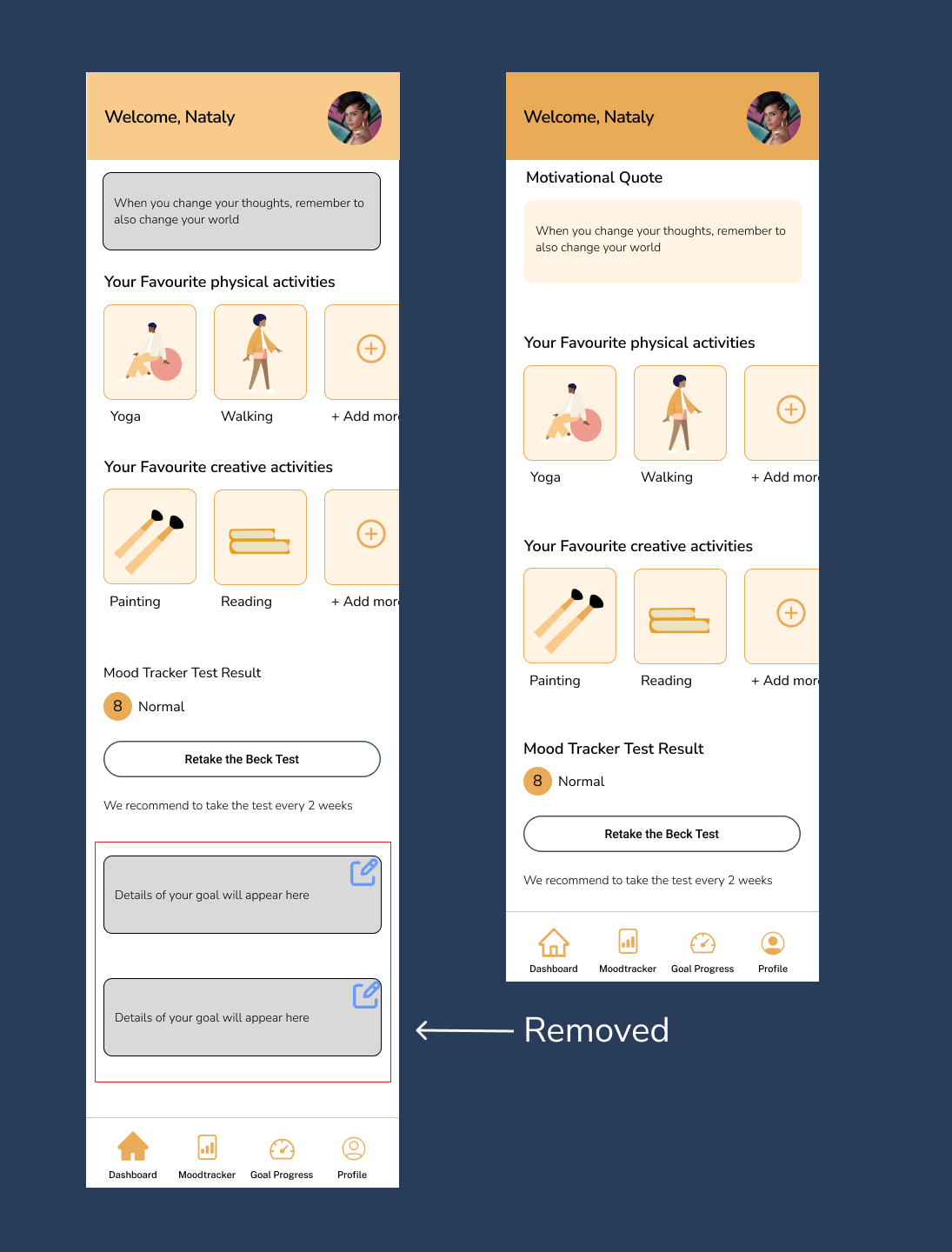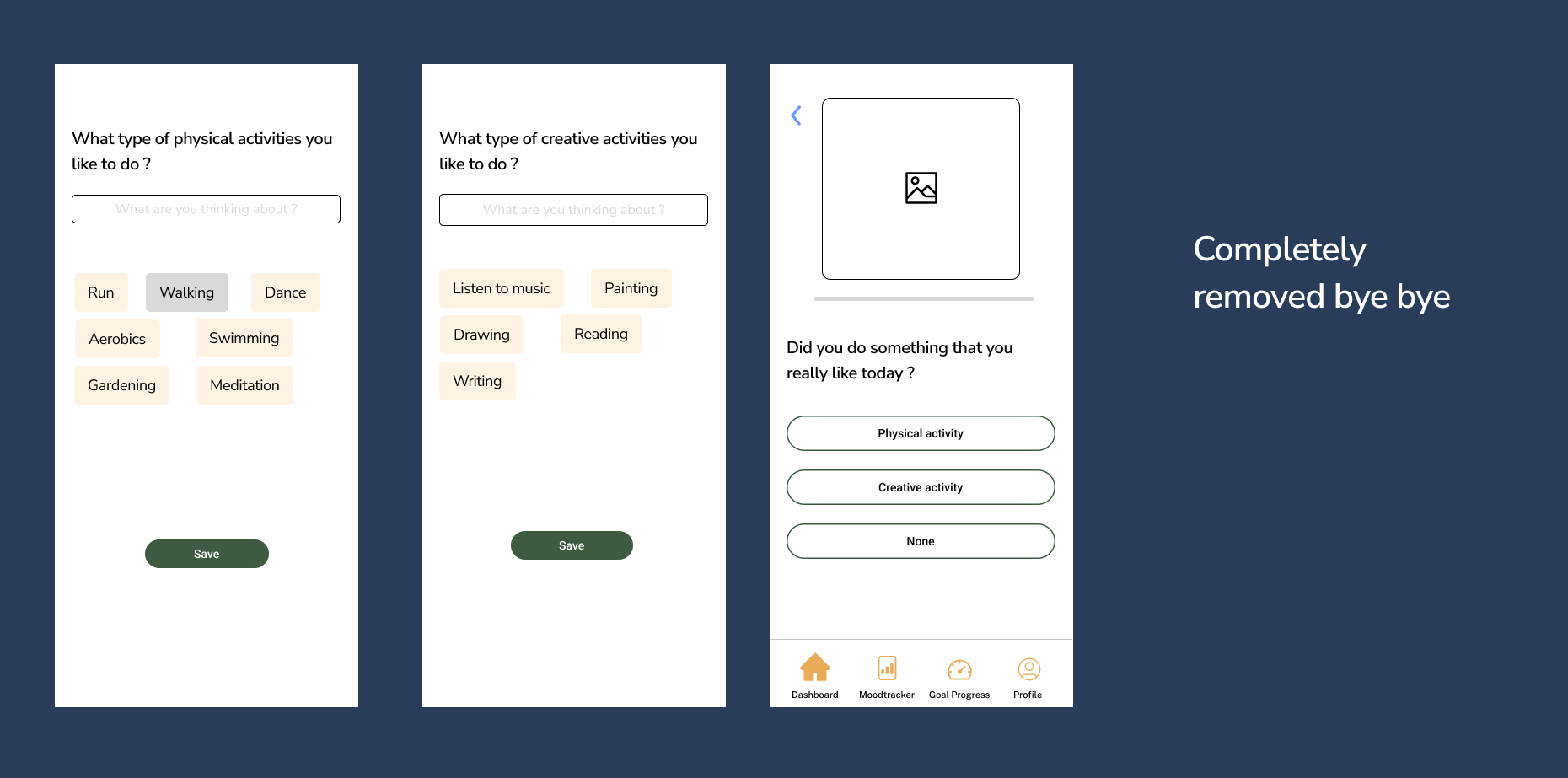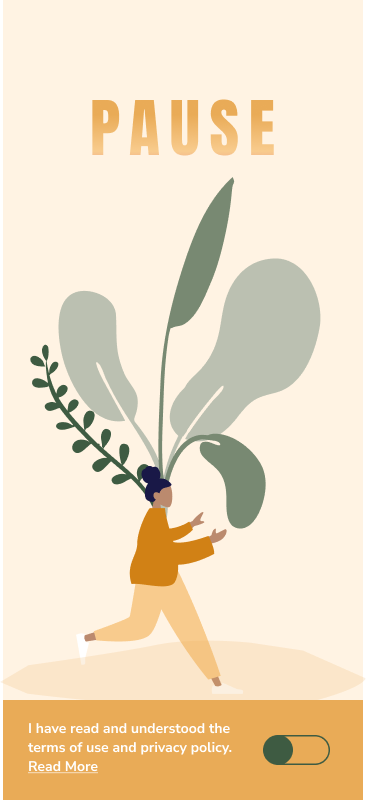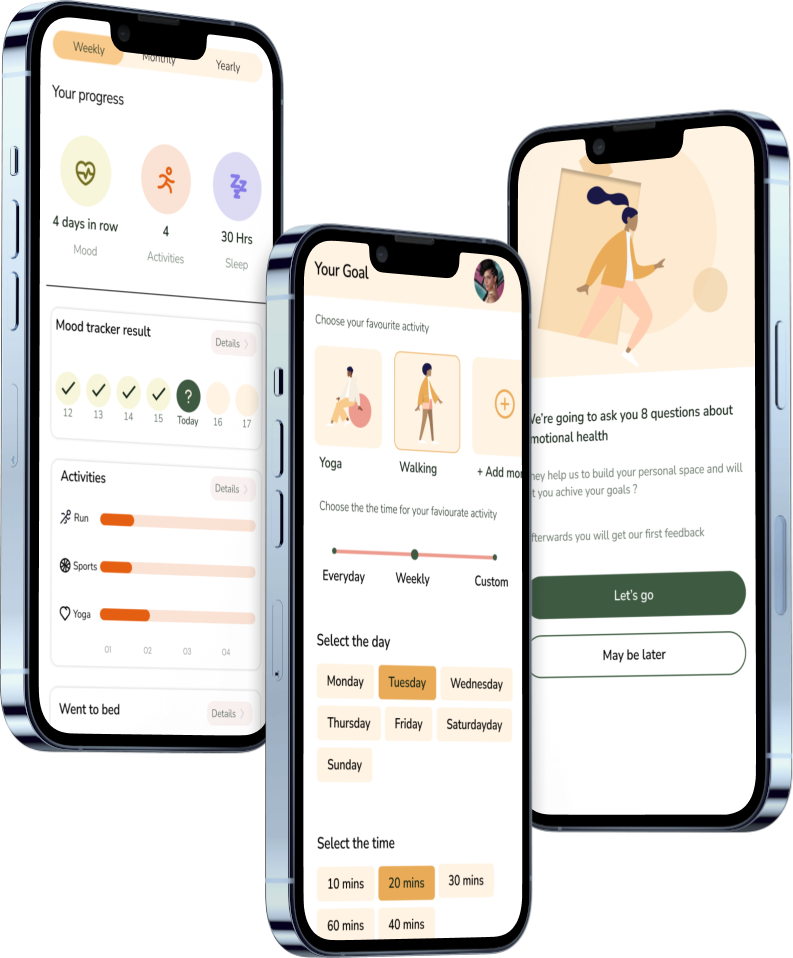
Design of mental health app which helps people in initial phases of depression
Pause
Design of mental health app which helps people in the initial phases of depression
Ironhack Bootcamp project
Date: June 2022
Role: User Research, UI/UX Design
Duration: 2 weeks
Overview
This project was part of the Ironhack challenge, where I worked for a fake client called daily health conference with teammate Flore Leclerc
Let’s discover how we addressed this problem statement.
At the start of the project, we decided to focus on depression
Design objectives:
Design a mobile app to support wellness
Show users progress and push them to commit to a healthier lifestyle
Problem Statement:
People in the early stages of depression caused by social pressure need to understand their mood fluctuations to go back to normal life.
Using the Design Thinking process
We used the Design Thinking approach to solve our problem. This approach is split into 5 phases:
Empathize : User research , user interviews and survey , competitor analysis
Define & Ideate : User personas , Problem statement , Crazy 8 , Information Architecture
Test & Prototype : Wireframes , usability testing and Final UI design
Research
But why Depression ?
Insights from secondary research
Recent studies in France showed that the number of people suffering from depression has increased from 15.5% on October 21, 2020, to 22.6% on November 25, 2020.
3 million people have suffered from depression in the last 12 months
1 in 5 people suffer from depression once in their life
Risk of suicide is increased by 25% for people suffering from depression
In its mildest form, depression doesn’t stop you from leading a normal life, but it makes everything harder to do and seem less worthwhile. At its most severe, depression can make you feel suicidal, and be life-threatening
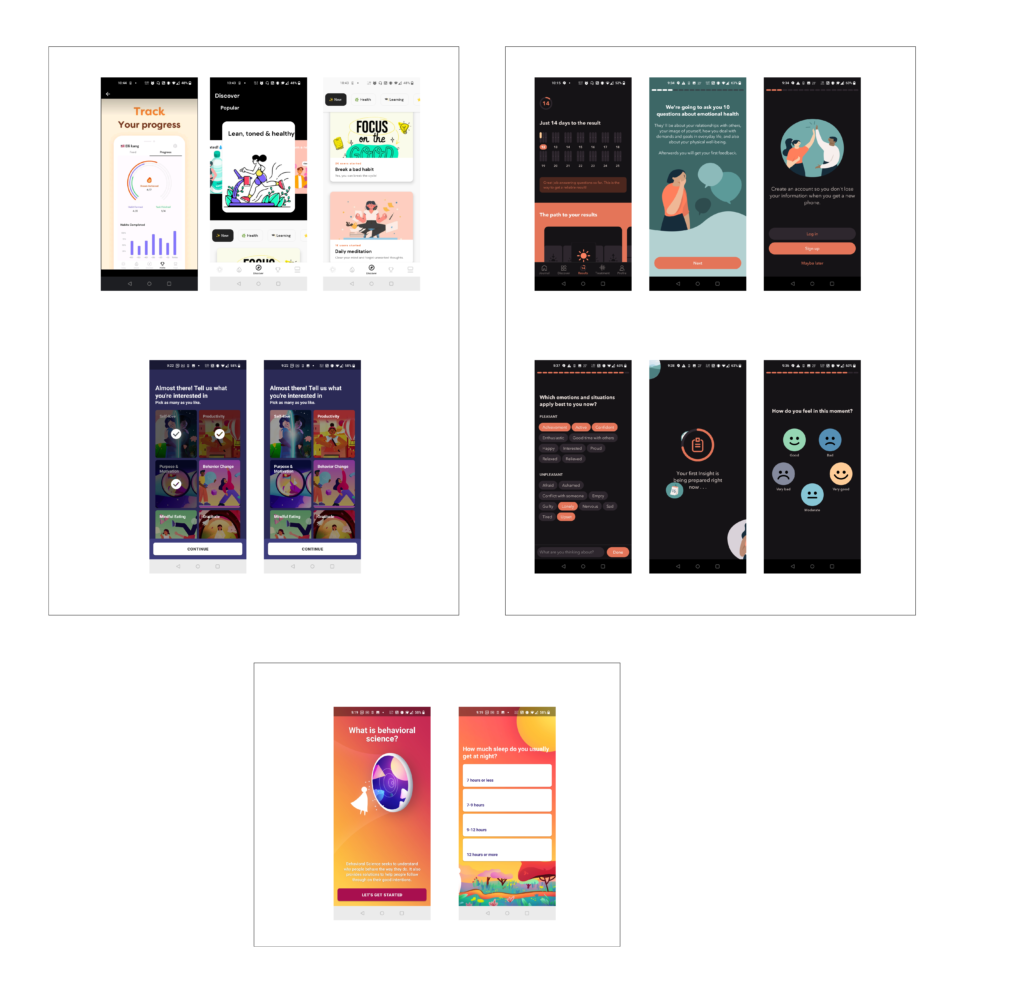
Insights from competitor analysis
They base their business model on limited content for free and unlimited content with premium account.
Problems being ignored: Apps can not replace psychiatrist treatment, they can be used as help when you are going to a psychiatrist
The rise of new problems: Potential pitfalls with goal tracking depression apps,
One of several apps that ask users to rate their anxiety level before and after they complete an exercise, users may feel a cognitive bias pushing them to say I feel better.
User research
Quantitative data : Survey
Unfortunately, there is still a big stigma in certain cultures about depression; therefore, most people are not open to talking about it. However, some people responded to our survey and insights are as below:
100%
people who responded to the survey said, they felt better after doing some physical or creative activity
70%
people who responded to the survey said, they felt lonely during thier depression episode
50%
people who responded to the survey said, they felt need to talk with someone
Qualitative data : User interviews
To begin our research, we had to understand how people felt when they are depressed. how people behave when they are depressed.
The secret of any research to obtain real answers is to interview the right audience. That being said, finding the right audience is probably the most difficult part of the research, especially when we are working with a topic such as depression.
Quotes from Interview
“I felt changes in sleep pattern, some days I used to sleep a lot during the day, I had no motivation to so anythingand I feel exusted all the time “
Insights from user research
The common symptoms of depression are : frequent fluctuations in the mood, changes in sleep pattern , loss of appetite , Anxiety , low self esteem
Doing any form of physical or creative activity help them to feel better.
As depressed people have lack of dopamine and doing any form of physical or creative help them to release dopamine
Insights from 2 Subject matter experts interview
In all the phases of depression, they recommended to talk with a psychologist
Psychiatric diagnosis is very important in each depression case but it is not very easy to get as patient data is saved before he goes to the psychiatrists
Very mild depression lasts for less than 3 weeks
User Persona
To take us out of this research and let us focus on solving for the user, we created a representation of our target audience. For each of our design decision, we referred to this persona
Women have more chances then men to be diagnosed with depression. Depression can occur at any age.
Anxious Nataly, had her first episode of depression last month. She is in her initial phases of depression. She has frequent mood swings. She knows she needs help but does not understand what to do!
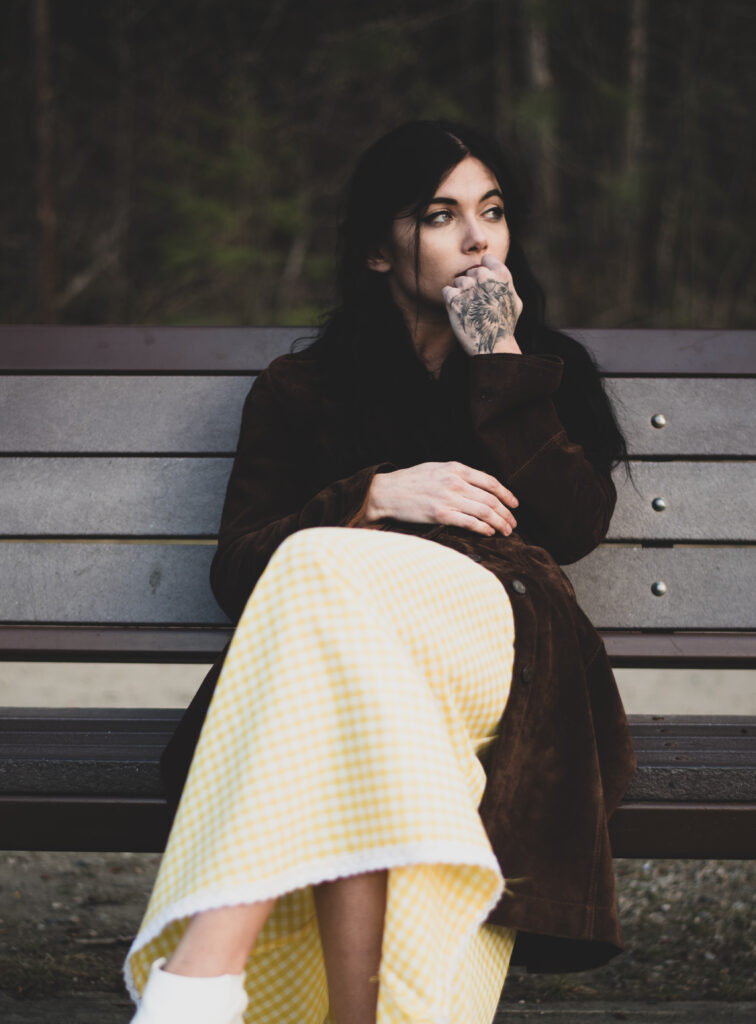
Human Resources manager in a big company, she lives in Paris with hey boyfriend.
She loves gathering with friends and go dancing on the weekend.
She feels social pressure from her family. Since few weeks her very close friends told her that she looked tired. Actually she is noticing that she eats less and her sleep is not very good. She doesn’t meet friends like before. Home is her shelter
Goals:
- To see her friends and engage with them
- Dancing regularly again
- To feel good about herself
Frustrations:
- Feeling loneliness and self doubt
- She can find the will to go to the dance show
- She can’t share her feelings with her close friend and family
Needs:
- To get authentic information about her mental health from the articles that she reads on internet
- Identify her state of mind
- To talk with someone who can listen
Problem statement
With this information in mind, we could understand what we were trying to solve below problem:
People in the early stages of depression caused by social pressure need to understand their mood fluctuations to go back to normal life.
Also doing some physical or creative activity helps the brain in the production of feel-good neurotransmitters, called endorphins.
We also decided to implement goal tracking for activities. If users exercise regularly, it will soon become part of their lifestyle and will help reduce depression.
Many people talked about how doing physical or creative activity helped them
We knew we wanted a solution that worked both indoors and outdoors, to promote these two types of activities since we realized most people normally use a mix of these two to relax and take a break.
Mood board
Depression can change the way a person perceives the world around them. They may no more find vibrancy in colors like red which further affects their mood and make them feel more grave.
Hence choosing the correct mood board was very important for us
For the main CTA, we decided to go with green as it comes from nature and helps to soothe the emotions
For our most used color, I choose the shade of Yellow as it gives everyone the impression that it is full of brightness to hide the darkness beneath the bright shade of yellow.
The shade of yellow used in the app is chosen from the golden hours in the morning
Depression is frowned upon in society. People who have it fear that they are stigmatized so they will hide their depression by ‘putting on an act. Making everyone around them think they are perfectly fine and happy. Depressed people may overplay their ‘happiness ‘. That’s why I choose yellow. It’s excessively bright that is easily noticed.
Usability Testing
In order to assess our solution, we did Usability Testing on our mid-fi wireframes, with 6 users. By doing so, we were able to understand what needed to be changed on our app.
On the goal setting page, our first approach was the user will first select when they want to do the activity and how much time they have. Later they will select which type of activity
But after user testing, we realize they prefer first the type of activity they want to do and depending on that they want to allocate the time
Next steps :
Working on an MVP project, we had to focus on the main solution. However, we already have a clear idea of what needs to be done to perfect this first attempt of Pause:
We would love to implement beck test features in detail.
Given the current screens of the app, we would also love to do more on the mood tracker screen
We would like to offer the possibility of notifications
And last but not least do more usability testing of the app
Takeaways
While it is quite difficult to solve wellness issues only using an app, we strongly believe that sometimes people just need a little push. PAUSE doesn’t promise to be a miracle solution or provide any result of some kind. We offer little help to track your mood and help to achieve your goal
This app was never meant to be a replacement for psychiatric treatment but as an added help to the people suffering from the initial stages of depression
